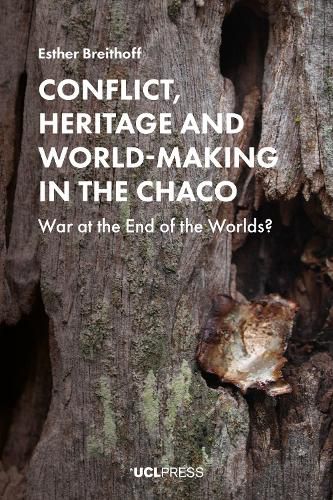Readings Newsletter
Become a Readings Member to make your shopping experience even easier.
Sign in or sign up for free!
You’re not far away from qualifying for FREE standard shipping within Australia
You’ve qualified for FREE standard shipping within Australia
The cart is loading…






Conflict, Heritage and World-Making in the Chaco documents and interprets the physical remains and afterlives of South America’s first modern armed conflict, the Chaco War (1932-35), and its effects on modern-day Paraguay. Esther Breithoff not only focuses on conventional archaeological remains but also takes an ontological approach to heterogeneous assemblages of objects, texts, practices, and landscapes shaped by industrial war. What she shows is that these assemblages are not simply dead memorials to a bloody war, but rather have been, and continue to be, active in making, unmaking, and remaking worlds-both for those who saw the war itself and for those who continue to live with its effects in the present.
Framing the study as an exploration of modern, industrialized warfare as a sort of hyper object , Breithoff shows how the material culture and heritage of modern conflict fuse together objects, people, and landscapes, connecting them physically and conceptually across vast, almost unimaginable distances and time periods. This book makes a major contribution to key debates in anthropology, archaeology, critical heritage, and material culture studies on the significance of conflict in understanding the Anthropocene, and the roles played by its persistent heritages in assembling worlds.
$9.00 standard shipping within Australia
FREE standard shipping within Australia for orders over $100.00
Express & International shipping calculated at checkout
Conflict, Heritage and World-Making in the Chaco documents and interprets the physical remains and afterlives of South America’s first modern armed conflict, the Chaco War (1932-35), and its effects on modern-day Paraguay. Esther Breithoff not only focuses on conventional archaeological remains but also takes an ontological approach to heterogeneous assemblages of objects, texts, practices, and landscapes shaped by industrial war. What she shows is that these assemblages are not simply dead memorials to a bloody war, but rather have been, and continue to be, active in making, unmaking, and remaking worlds-both for those who saw the war itself and for those who continue to live with its effects in the present.
Framing the study as an exploration of modern, industrialized warfare as a sort of hyper object , Breithoff shows how the material culture and heritage of modern conflict fuse together objects, people, and landscapes, connecting them physically and conceptually across vast, almost unimaginable distances and time periods. This book makes a major contribution to key debates in anthropology, archaeology, critical heritage, and material culture studies on the significance of conflict in understanding the Anthropocene, and the roles played by its persistent heritages in assembling worlds.